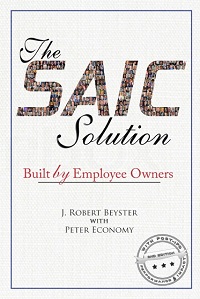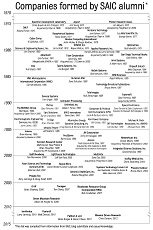Could General Motors Benefit from Employee Ownership?
2 Comments Published by Dr. Beyster June 1st, 2009 in Employee Ownership, Government, Technology.It was with great interest that I followed news of the General Motors bankruptcy filing this morning. It’s hard for me to believe that this company which was once America’s largest and perhaps most important has been so humbled. The company’s U.S. market share has tumbled from 45 percent in 1980 to 22 percent in 2008. I personally have always had a deathly fear of bankruptcy, I believe because of all the financial turmoil I saw during the Great Depression. This fear drove me to fully understand the details of any financial deals we decided to pursue at SAIC.
Some of you may recall that I grew up in the Detroit area and that my uncle, Harold Foss, found my father a job at the Ternstead Corporation, which was a car trim subsidiary of General Motors in Detroit. This was good timing for our family because jobs were very hard to come by at that time. I soon became a great fan of General Motors, and believed that it was the greatest and most successful company in the world — a belief I carried with me for decades. I wouldn’t consider buying a car that was anything but one made by General Motors until Ford joined us in sponsoring the America’s Cup in 1987. I still buy Ford products to this day.
It is my understanding that the federal government has agreed to provide General Motors with an additional $30 billion, and the Canadian government will pitch in $9.5 billion. As a result, the American taxpayers will own about 60 percent of General Motors and Canadian taxpayers will own about 12.5 percent of the company. In the bankruptcy filing (PDF), General Motors stated that it currently has $82.3 billion in assets and $172.8 billion in debts. I would guess that a major goal of the bankruptcy filing is to shed much, if not all, of this debt.
The new General Motors should be a much leaner and greener operation. Not only will a large amount of its debt go away, the company will let go of up to 25,000 employees, shut down 17 factories and parts centers, and close 2,400 of its 6,000 dealers. For the first time since 1925, General Motors will no longer be included in the Dow Jones industrial average, an event that I never imagined I would see. The company says it will focus on building more affordable small cars that offer better gas mileage, including new hybrid, fuel cell, and electric models. This means that new technologies will be even more important to the company. It will need to use stronger materials that are lighter in weight, it will need to create more fuel-efficient designs, and it will need to push ahead of the Japanese innovations in engine technologies. The Department of Defense has been working in these areas for some time. Perhaps there could be sharing of information by way of DARPA.
As it emerges from bankruptcy, General Motors has a unique opportunity to make its employees owners. President Obama says that he does not want the government to be in the business of running General Motors, and that his intention is to quickly remove it from the day-to-day operation of the company. Presumably once the company is back on good footing, the government will sell its equity stake or otherwise transfer it back to General Motors. Who better to own the company than its employees? Based on my experience at SAIC, General Motors’ employee owners will be more motivated and they will perform better than employees who are not owners.
What do you think? Do you think the new, improved General Motors will have a chance to thrive in the coming years, or will the company become an also-ran, much as Chrysler has become? I, for one, hope General Motors can turn itself around. But I also hope that Ford is able to capitalize on the situation and position itself for growth as the economy turns around. I am glad to see at least one of the Big Three car manufacturers had the foresight to see the road ahead, and prepare itself for a much different economic environment that we are in today. It may very well turn out that the Big Three will become the Big One, and that Ford is alone at the top among U.S. car manufacturers.
– Bob
Related Posts at Dr. Beyster’s Blog





Dr. Beyster -
You likley saw the news that four Republican senators introduced a bill to distribute the new shares of GM into the hands of approximately 120 million Americans who filed tax returns.
I would be interested in your comments on this interesting new form of “employee ownership” – “taxpayer ownership”.
Regardless of the practicality, it certainly raises some interesting questions and discussion around applying employee ownership concepts to a new class of distributed stakeholders.
Bill
Bill: I read your posting with interest. I find it hard to believe that the board of directors of GM would permit the new shares to be distributed to taxpayers rather than the other owners of GM. However, it’s an interesting concept. — Bob